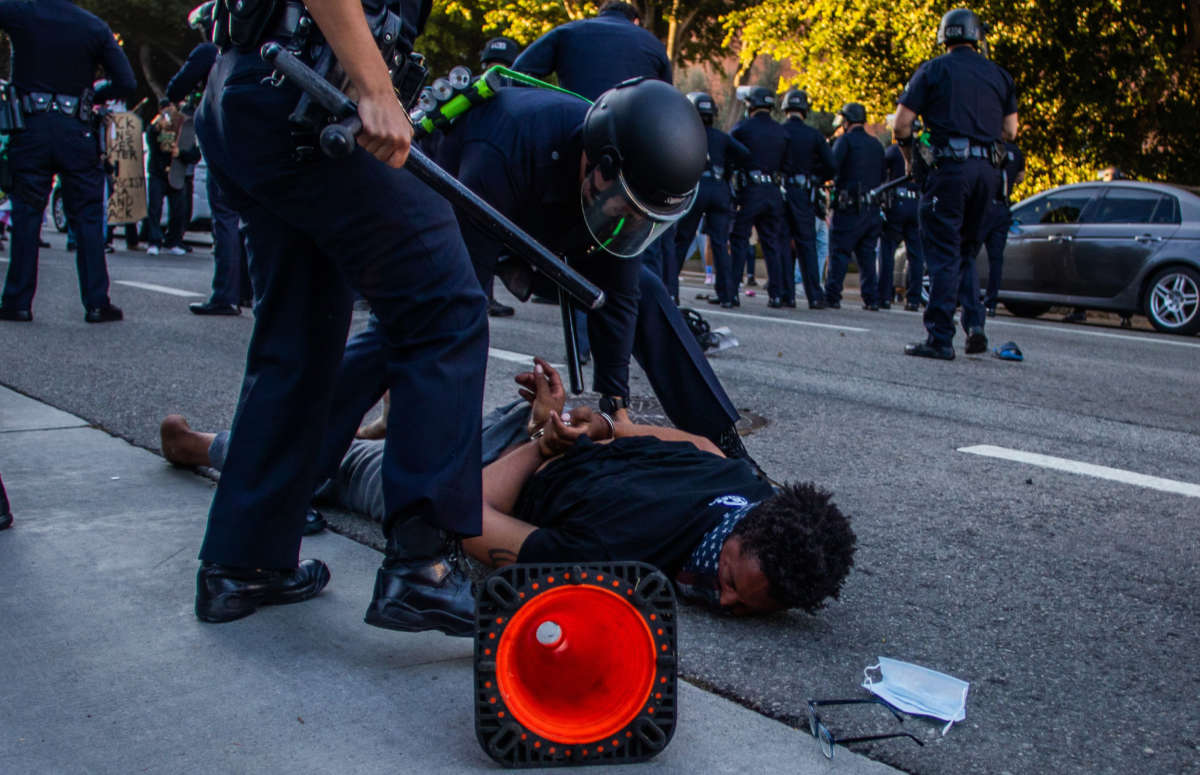Police in the United States are more likely to use force against left-wing protesters than they are against right-wing protesters, according to new data analyzed by The Guardian, corroborating observations repeatedly made by the left.
The data is based on over 13,000 protests since April of last year and was gathered by researchers for the U.S. Crisis Monitor project. “Force” in the data includes use of tactics like tear gas and rubber bullets.
The Guardian’s analysis showed that police used force at 4.7 percent of left-wing protests versus 1.4 percent of right-wing protests — 511 left-wing protests and 33 right-wing. When looking at protests that didn’t involve looting or vandalism, the disparity grew: Police were about 3.5 times more likely to use force at left-wing protests than right-wing protests, 1.8 percent and 0.5 percent, respectively.
The report also found that police were more than doubly likely to intervene or break up a left-wing protest than a right-wing one, using tactics like arrests. A similar analysis of the same data by FiveThirtyEight found the same thing.
These analyses can potentially explain why the violent Donald Trump-inspired mob was able to overcome Capitol Police on January 6, as former president Barack Obama tweeted last week.
For those who are wondering why so much attention has been focused on the response of the Capitol Police to the Trump-inspired riots, here’s a data-driven article that provides some useful frame of reference. https://t.co/MAdlWGRd23
— Barack Obama (@BarackObama) January 8, 2021
“No one can tell me that if it had been a group of Black Lives Matter protesting yesterday, they wouldn’t have been treated very, very differently” than the Trump loyalists at the Capitol, Joe Biden said in a speech on January 7.
Following the attack, right-wing outlets have been reporting misinformation about the disparity between the Black Lives Matter (BLM) protests from last year and last week’s attempted coup.
This week, Fox News ran a graphic saying that 30 died in BLM protests versus five due to the Capitol breach — the death statistics from the BLM protests are in reality much lower and, as one Twitter user pointed out, the deaths due to the attempted coup were much more per period of time. Additionally, many of the estimated 12 deaths that occurred during the months of BLM protests were not at the protests, but adjacent or possibly unrelated. Almost none were caused by protesters — and two people were murdered by a right-wing extremist.
The graphic is part of a larger push by the right to downplay the violent attempted coup on January 6, despite the demonization of BLM protests; Rep. Jim Jordan (R-Ohio) said that impeaching Trump for his role in the coup is just “cancel culture”; many Republicans have been calling for “unity” to distract from the issue at hand; RedState published an article claiming that the coup simply didn’t happen.
The report on the disparity between the police responses to left- versus right-wing protests further underlines the disparity with the political responses to recent events — as The New Republic notes, “Republicans Want Impunity, Not Unity.” And while, as some have argued, the Trump militants were successful in intimidating members of Congress, many in the BLM movement are still fighting for justice.
On Thursday, the New York State Attorney General Letitia James announced a lawsuit against the New York City police department for excessive police force against BLM protesters last summer.
“[The Attorney General’s office] found that the NYPD arrested or detained hundreds of protesters, legal observers, medics and others without legal justification,” she said in a press conference. “In total, we found over 155 incidents of officers using excessive and unreasonable force against protesters.” James’s office’s findings line up with the data on the policing disparities from Thursday.
Join us in defending the truth before it’s too late
The future of independent journalism is uncertain, and the consequences of losing it are too grave to ignore. To ensure Truthout remains safe, strong, and free, we need to raise $43,000 in the next 6 days. Every dollar raised goes directly toward the costs of producing news you can trust.
Please give what you can — because by supporting us with a tax-deductible donation, you’re not just preserving a source of news, you’re helping to safeguard what’s left of our democracy.
